Experiences refined for people
Experiences refined for people
Last year’s NCAA National Championship drew 25 million viewers. This is an engaged audience you can’t afford to miss and a prime chance for marketers to engage a diverse and growing base this fall and winter.
College fans span generations, from alumni to students, and are deeply connected to their teams via social media, streaming, and in-person events.
But reaching these fans isn’t just about showing up. You must know how they watch—whether on live TV, streaming, or while scrolling social media.
Learn how to connect with this dedicated fanbase in 2024 using smarter targeting and deeper insights.
🏈 Important NCAA Season Dates: August 24, 2024 – January 30, 2025
College sports fans aren’t a monolith. Streaming platforms continue to siphon viewers from traditional television while stadiums still pack in can’t-miss crowds. To target smarter, understand the layers within this audience—demographics, interests, behavior, and emotional connections.
💡 Pro Tip: Don’t limit yourself to game day. Hit fans during post-game shows, highlights, and off-season content. Stay in front of them all year.
Most fans are between 18 and 55, but those aged 35 and 44 stand out—28% are hardcore.
Regional appeal beats age; Alabama, for example, breathes college football. These fans are more likely to be college-educated and earn 1.6 times more than the average U.S. population. That’s why they’re prime targets for high-end brands—think luxury cars, travel, and more.
Women are more active in social media engagement for college sports and especially drawn to behind-the-scenes content, like athlete interviews and team social media videos.

These fans aren’t just focused on the game—they’re passionate about tailgating, travel, and food, giving brands plenty of ways to connect. And their engagement doesn’t stop after the season.
These fans stay active year-round on social media and athletic sites, following events like March Madness and the NFL Draft.
Brands can reach them beyond game day with post-game shows, highlights, and off-season content. To become part of their experience, brands can sponsor tailgates or offer travel packages to major games, embedding themselves in the whole game-day tradition. Jersey Mike’s nailed this with their 2023 College Tailgate Tour, hitting tailgate events nationwide.
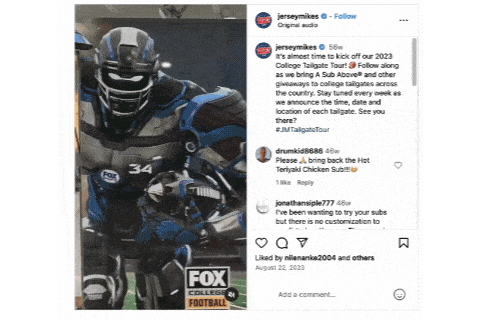
🔍 Related Case Study: KORTX Drives 2.5X More Conversions Than National Average for Yankees & Pepsi Campaign
Using interest and audience data, discover how KORTX’s data-driven strategy boosted fan engagement and conversions—insights you can apply to reach college football fans.
For these fans, it’s deeper than the team. Alumni, students, and locals see it as a symbol of shared history and values. The emotional bond makes support personal. Winning is great, but the team represents the university’s culture—pride they carry long after graduation.
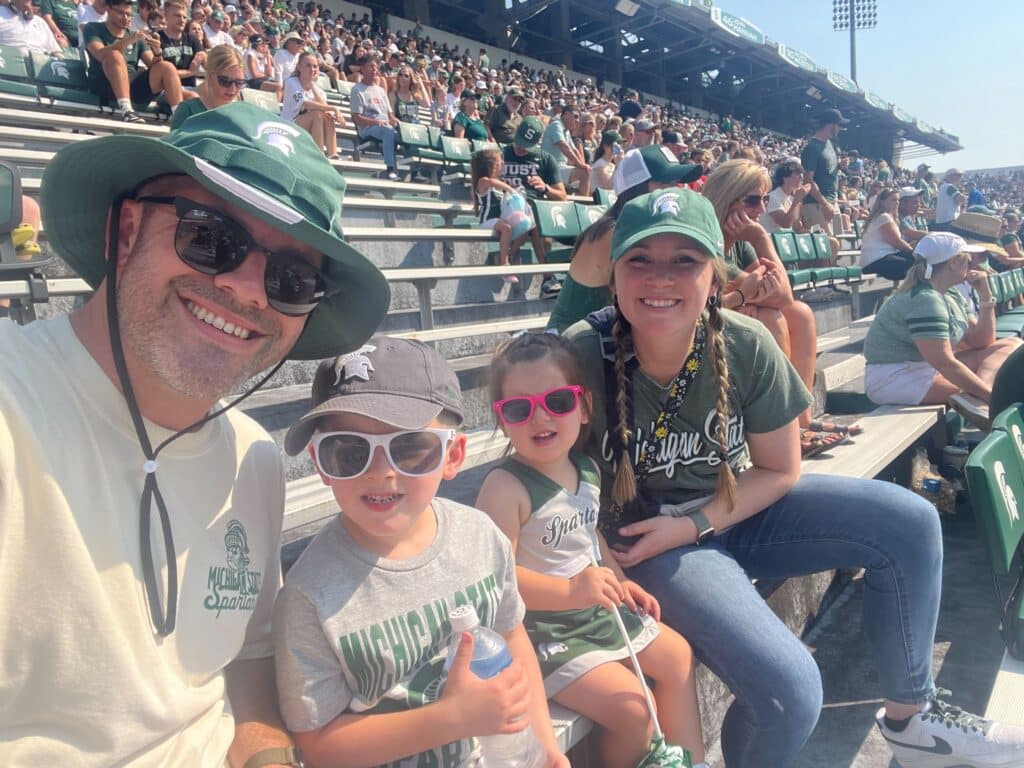
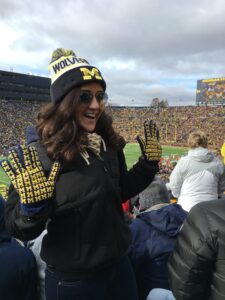
(Left) KORTX’s VP of Client Services, Jess Ostrom, and her family and Copywriter Kate Meda (right) showing off their university pride.
College teams often serve as the heart of their regions, giving communities a symbol to rally around. In towns without pro sports, college football becomes the main event and central to local identity.
Understanding alum bases, fan migration, and travel patterns reveals how far that reach can go.
Take Nebraska, for example: Memorial Stadium turns into the state’s third-largest city on game day, filling 85,000 seats for 60 straight years. That’s about regional pride as much as it is about football.
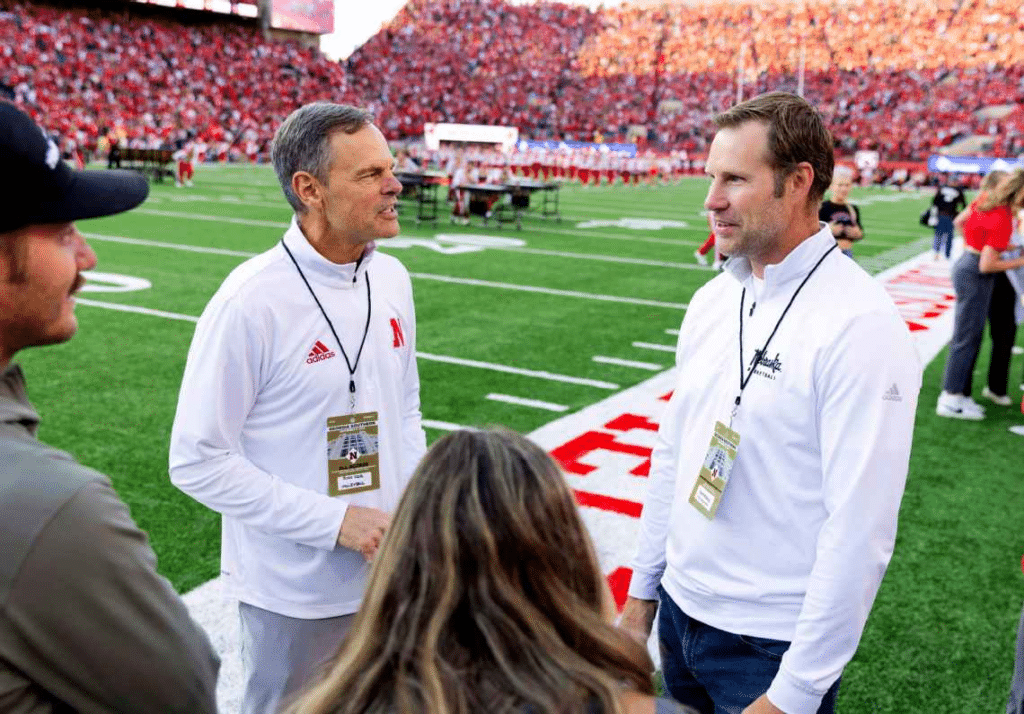
Streaming accounts for over 40% of linear TV usage, while traditional TV still holds 20.5%, mainly driven by live sports. Fans want options; digital platforms provide them, fragmenting the landscape more than ever.
Platforms like ESPN+, Peacock, and Hulu + Live TV are growing fast, but live sports still rule traditional TV.
These numbers prove that live sports keep traditional TV at the front and center. But there’s more.
Fans are increasingly multi-screening—checking social media, texting, or even ordering food while watching sports. In fact, 47% of people watching sports on TV or digital platforms also simultaneously tune into other live content.
For brands, your campaigns must fit seamlessly into this multi-screen environment.
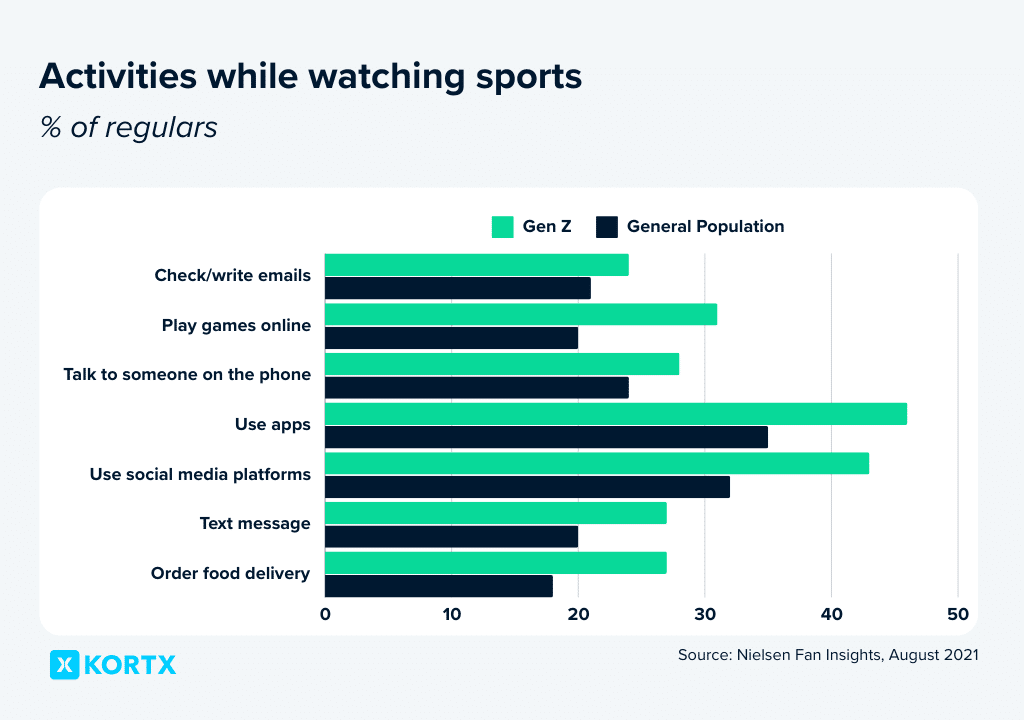
📚 Related Article: The Power of Second-Screen Advertising for Live Sports
Learn how mobile advertising is changing the game for live sports marketing.
More fans are shifting to digital antennas for free access to local college football games, which offer a budget-friendly alternative to cable or streaming.
Watching games in public venues like bars and restaurants also plays a big part in the game day experience, bringing fans together in social settings.
What’s the best way for a marketing team to break into the college football space?
“College football fans are passionate, with deep ties to their schools, state pride, and family traditions. To reach them, brands need to go beyond basic sports marketing. Focus on the unique traditions and rivalries that define each fanbase.
The best campaigns connect with these emotions, using a mix of geo-targeting and broader audience insights to reach fans locally and nationally. Authenticity matters—fans can spot fake efforts. Partner with relevant influencers and support university initiatives to build real connections.”

With fans engaging across multiple platforms year-round—from live streaming to social media—brands must stay in front of them at every touchpoint.
Here’s how you can target smarter, using data-driven strategies and emerging trends to connect with this dedicated audience all season long.
Refine your targeting with a data-driven approach that blends First- and Third-Party data to reveal fan behavior patterns.
To target college football fans more effectively, move past basic geofencing and generic zip codes.
Here’s how:
Work with platforms like Foursquare or GroundTruth for precise location data based on real fan behavior. These tools offer detailed insights into where and how often fans engage with key locations.
For example, focus on fans who frequently visit:
By honing in on visit frequency, you engage a more invested audience likely to convert.
💡 Pro-Tip: Don’t waste your time on uninterested audiences.
Instead of guessing based on geography, location-based data targets people who show real interest in visiting specific places. Rather than hitting everyone near a sports store, you focus on people who regularly go there—driven by actual data, not geographic assumptions.
Timing is everything. Hit fans based on recent actions:
Customize offers for fans at key spots like:
Combine online behavior with physical location for a comprehensive targeting strategy:
What’s the one marketing strategy that’s essential for success in the college football space?
“Audience targeting. Tapping into the unique passions and loyalty of college football fans is key. For example, a campaign focused on the University of Michigan could use elements like the fight song, team colors, or legendary players. This approach directly hits fans’ deep sense of identity with their school.
Audience targeting also goes beyond the season. You can target fans into tailgating, food, apparel, or video games, keeping the brand in front of them all year.”

College football fans are already locked in, making it the perfect time to reach them with your message during key game moments. Ads next to pre-game shows, halftime reports, or post-game analyses tap into that built-in energy, making your message hit harder and stick longer.
Brands tied to the “football experience”—like food delivery, apparel, or beverages—can benefit the most.
For example, a food delivery ad during a pre-game show speaks directly to fans planning their game-day meals. Apparel or beverage brands can position their messaging around the excitement and camaraderie of watching football, making the connection more organic.
Contextual relevance helps ads stick. Fans looking for a meal will likely remember a well-placed food delivery ad before the game. This strategic placement builds a connection between the brand and what the fan is doing, keeping the brand in mind for future purchases.
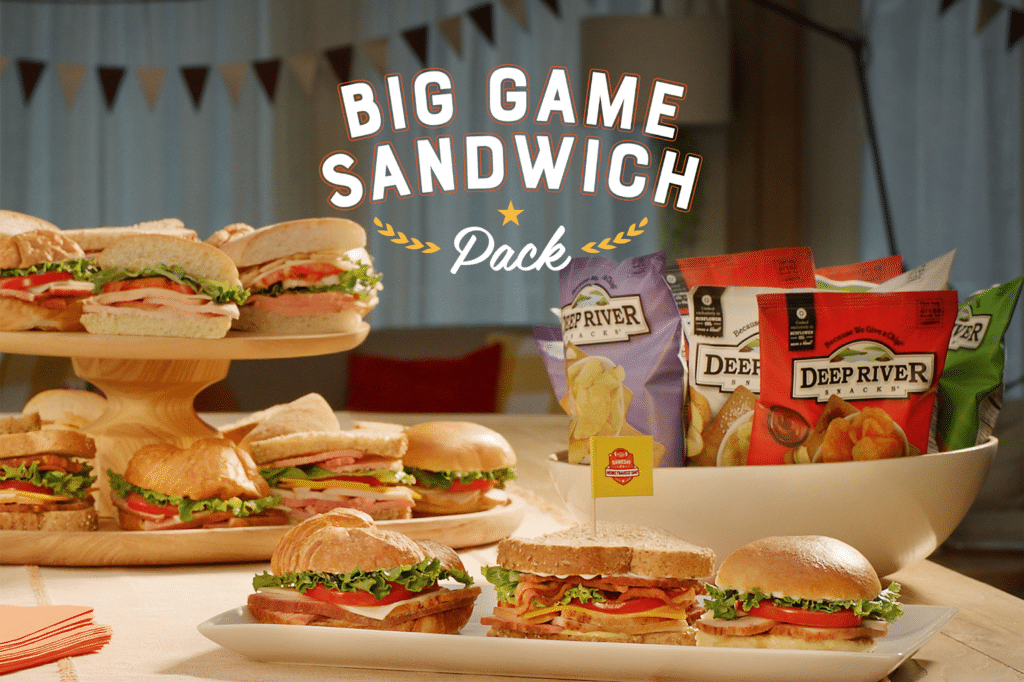
Honey Baked Ham leaned into college football for its biggest non-holiday marketing effort.
ESPN+, Peacock, and YouTube TV have the big broadcast rights to college football, but your audience isn’t just sitting on these premium channels. They’re scattered across platforms—including Free Ad-Supported Streaming TV (FAST) options like Tubi and Pluto TV—which can give you access to untapped viewers for a lot less.
Identify small but telling trends in how your audience engages. For example, you might notice a shift where more users engage with your content on mobile in the mornings, while desktop interactions peak in the afternoons.
Adjust your strategy by pushing mobile-optimized content during peak morning hours and more detailed, desktop-focused offers later in the day.
You can also use past campaign data to predict future behavior. For instance, if you see that engagement spikes around major events or specific times of the year, build predictive marketing mix modeling (MMM) models to forecast these patterns.
Tools like Nielsen and Comscore break down audience behavior across platforms. Find out what your audience is watching, on which device, and when. This keeps you from oversaturating the same group and helps you spread your message more effectively.
💡 Remember: Finding your audience isn’t about sticking to premium channels.
It’s about using your data, testing platforms, and constantly optimizing to hit them where they’re actually watching. Whether it’s ESPN+ or Tubi, it’s all about staying flexible and smart with your spend.
You can either go head-to-head with them or focus on platforms they’re missing to steal market share in less crowded spaces. Tools like iSpot.tv and AdImpact offer these detailed competitor analyses.
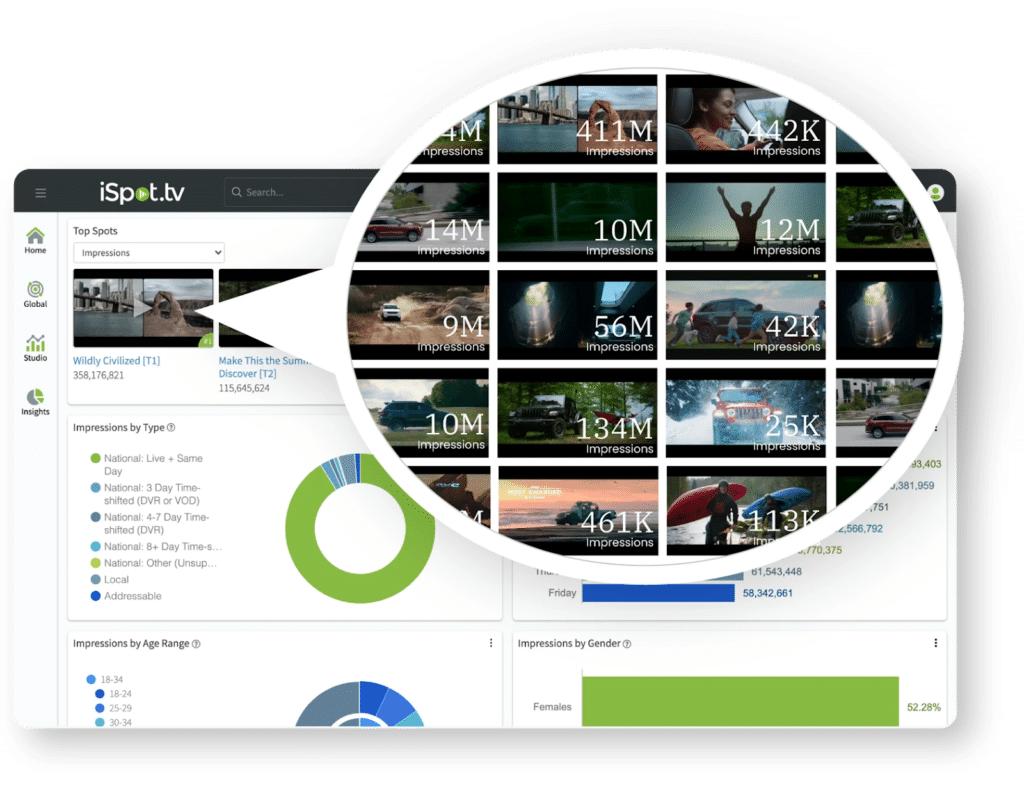
iSpot.tv allows you to monitor competitors’ CTV and video ads creatives in real-time.
Formats like Picture-in-Picture (PiP) interactive CTV keep the game front and center while interacting with clickable links or shoppable elements, driving immediate action and higher conversions.
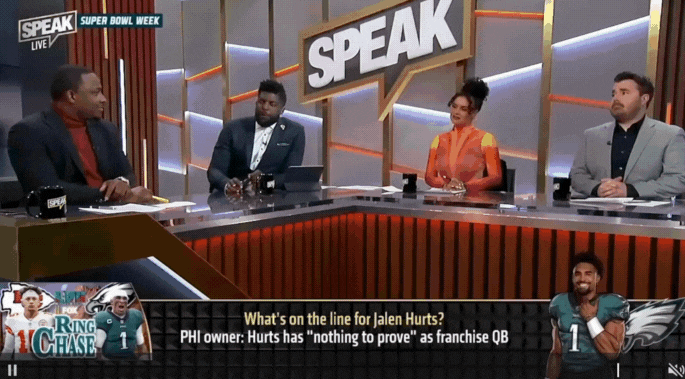
An example of a Picture-in-Picture (PiP) ad to sell Jalen Hurts merch during the Eagles game.
Depending on your budget, there are a few different ways to advertise on CTV during the games.
Name, Image, Likeness (NIL) allows college athletes to profit from their personal brand through endorsements, sponsorships, and partnerships.
NIL has changed the game, allowing student-athletes to cash in on their brands. This opens up a real opportunity for businesses to partner with athletes and create authentic connections with fans.
College athletes bring a unique local appeal that pros can’t match. Their relatability makes them ideal ambassadors for brands looking to build trust and authenticity in specific communities.
Brands like Wendy’s have already used NIL partnerships with student-athletes to capture the energy of college sports in their national campaigns.
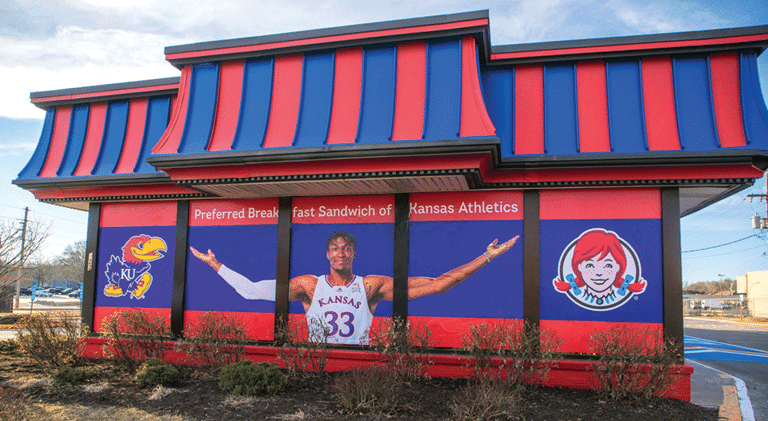
Learfield’s new Allied program established a deal between Kansas’s David McCormack and the Legacy Restaurant Group.
How is NIL transforming college sports marketing and engaging fans in 2024?
“Oklahoma State’s use of QR codes on helmets is a bold move in NIL, giving athletes a direct line to fans through real-time engagement. It’s a game-changer for how brands and athletes reach their audience beyond the usual ads, turning every close-up shot or social post into an instant call-to-action, driving donations or purchases without disrupting the fan experience.”
When you know your audience—whether it’s school loyalty or state pride—you deliver more relevant ads. Dynamic Creative Optimization (DCO) allows brands to fine-tune ads for specific fan bases and regions, making the messaging hit harder.
Michigan fans might respond better to team pride, while Southern audiences might rally around state rivalries. Adjusting copy, visuals, and offers to these differences make the message feel personal and connected.
Marketers can switch up creative through a rule-based dynamic feed, saving time and money by repurposing existing assets into high-impact ads.
What budget-friendly marketing tactics can smaller businesses use to tap into the college football audience?
“Smaller businesses can reach college football fans by targeting halo content—pregame shows, postgame breakdowns, and highlight reels. It’s a cheaper alternative to in-game ads while still tapping into the game-day excitement. Adding audience and location-based targeting, like focusing on fans near stadiums or who frequent sporting goods stores, helps connect with more engaged viewers without blowing the budget.”

College football fans are die-hard, loyal, and deeply connected to their teams. Reaching them takes more than throwing ads on TV. You need to know their habits, whether they’re watching live, streaming, or scrolling through social media. It’s all about tapping into school pride and using intelligent targeting in your creative assets and media buying. Get the context right, speak their language, and you’ll build real connections that last long after the final whistle.
Your brand belongs where their passion lives. Reach fans across Display, Video, CTV, and Audio – every platform they love.
Drew Pytel is a Senior Account Manager at KORTX. He has extensive experience researching and creating strategies for multicultural campaigns. He enjoys golf, bourbon, and being active with his wife and 3 kids.
From us to your inbox weekly.